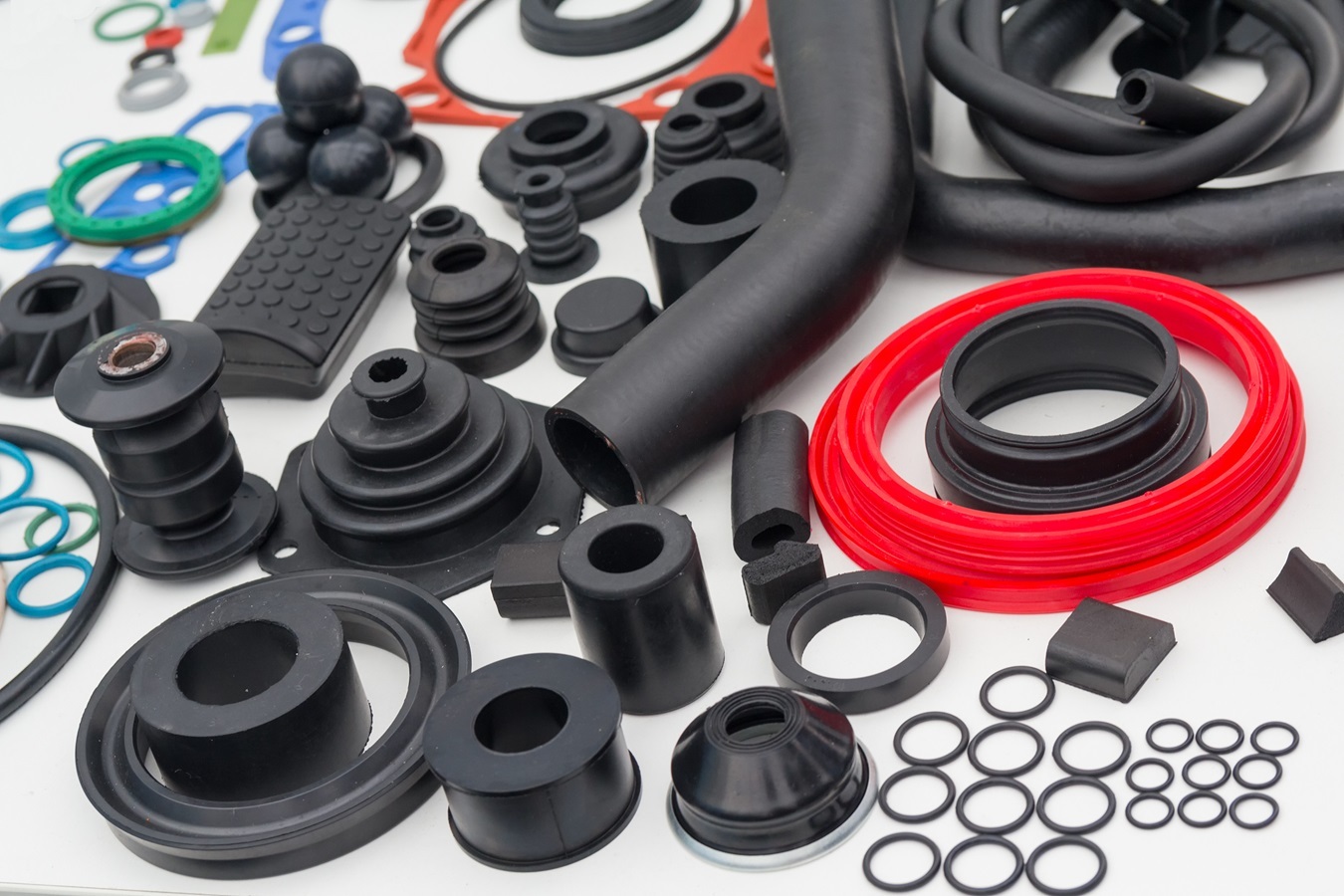Rubber & Plastic
Rubber & Plastic
Magnesium Oxides (MgO) have been utilized in the Rubber Industry for more than 100 years. MgO is very important to many halogenated and nonhalogenated elastomers for numerous reasons.
Acid Acceptor/Neutralizer:
The primary function of MgO in CR and other halogenated elastomers (BIIR, CIIR, CPE, CSM, ECO, FKM), containing chlorine, bromine or fluorine, is to scavenge acidic byproducts (acid acceptor). These harmful byproducts are generated during processing, vulcanization and aging of rubber articles. During vulcanization and storage, chloride radicals and hydrogen chloride are created. These chloride-containing compounds can decompose the polymer chain and/or combine with zinc to produce zinc chloride. In turn, zinc chloride is a very strong accelerator during vulcanization and promotes scorchy (cures too fast for further processing) compounds. The MgO neutralizes the cure system and protects the polymer by reacting preferentially with the chloride and thus ridding the compound of polymer degradation or scorchy cures.
Crosslinker/Cure Activator:
In addition to scavenging acidic byproducts, MgO are also used as curing agents in CSM (Chlorosulfonated Polyethylene). In a chemical reaction with moisture, MgO crosslinks the hydrated chlorosulfonyl groups and forms ionic bonds. Excellent physical properties (except compression set) and colorability (v. lead cures) can be obtained. Roofing and pond liner rubber articles are produced with this technology. In carboxylated nitrile compounds, MgO are used as a curative forming ionic bonds at the reactive carboxylic acid (-COOH) site of the polymer. In other halogenated elastomers, especially CR, MgO acts as a cure activator and increases the state of cure which leads to increased unaged and aged physical properties and fluid resistance.
Adhesive Component:
MgO are extensively used in CR contact adhesive compounds. They function as acid acceptors and react with phenolic resins to create resinates that have very good high temperature bond strength. In addition, MgO of very small particle size discourage settling of the oxide and phasing of the adhesive compound.
Antidegradent:
MgO are often used as part of antidegradent packages for demanding applications in high performance polymers like HNBR. Studies have shown that MgO in combination with antioxidants greatly improves long term heat aged physical properties in both peroxide and sulfur-cured compounds. This technology has been recently utilized in EPDM compounds.
Recommended Products
InnoMag150, derived from Salt Lake, is a white powder with high purity, high reactivity and large surface area.

undefined
Nanostructured MgO can be prepared through different chemical (bottom-up approach) or physical (top-down approach) routes. The characteristics of Nano MgO increase its utility manifolds and it also has various other properties such as high melting point, cost-effective production, biodegradability and biocompatibility.

undefined
Magnesium carbonate (MgCO3) is designated as a generally recognized as safe (GRAS) material by the American Food and Drug Administration (FDA), making its nano form have a good application prospect. Nano magnesium carbonate (Nano MgCO3) is a kind of nanoparticle of 8nm average diameter and large surface area.





